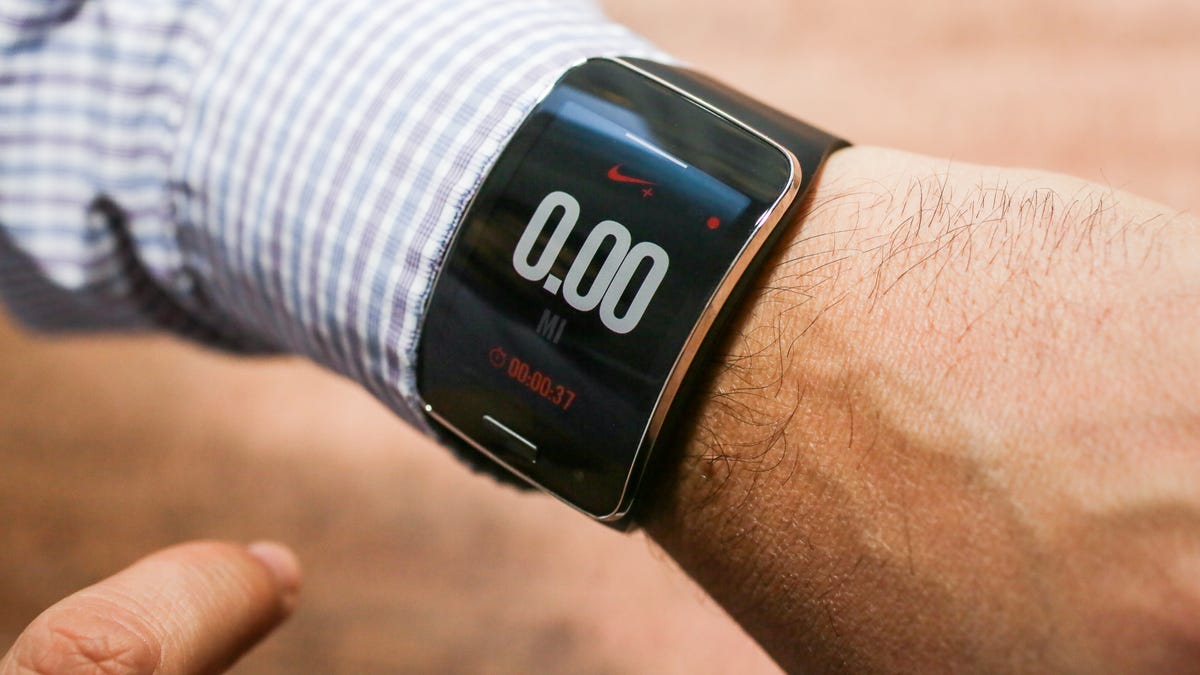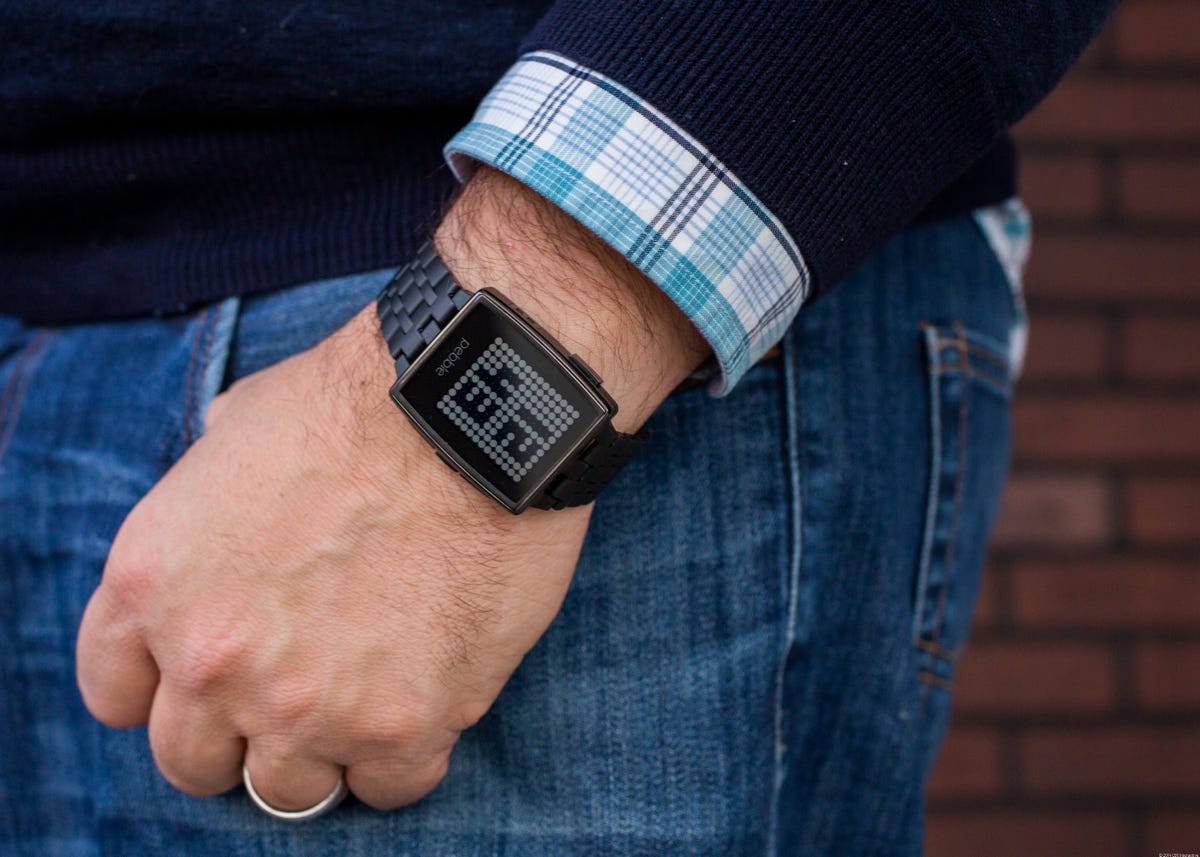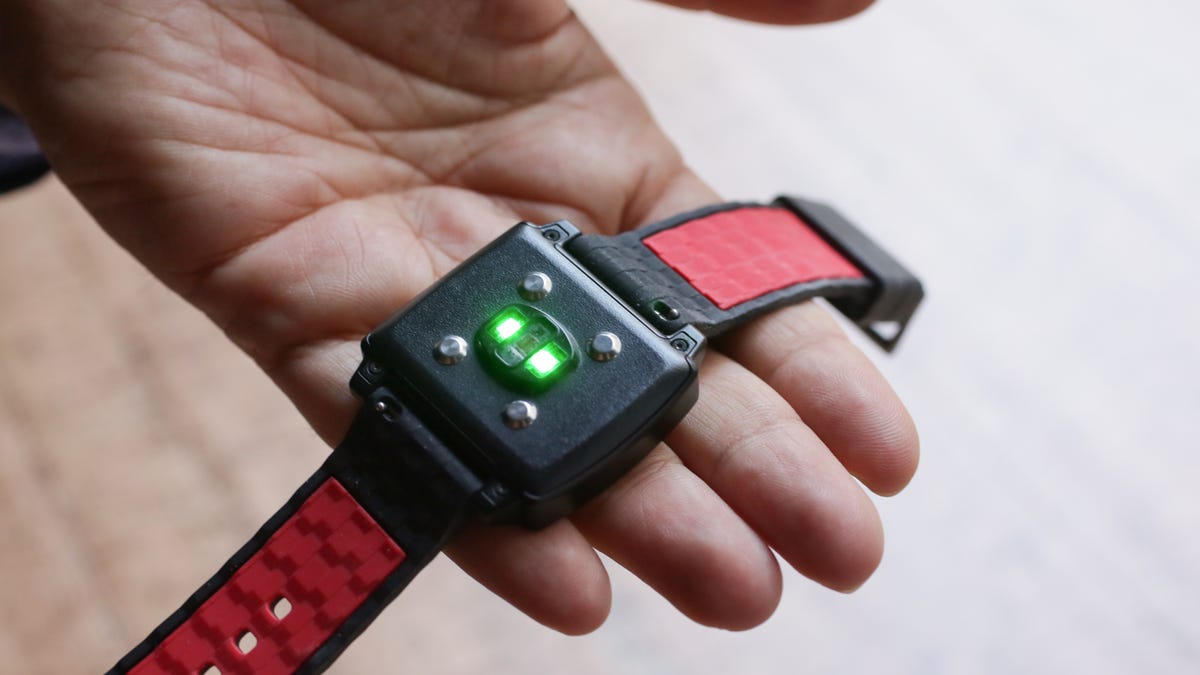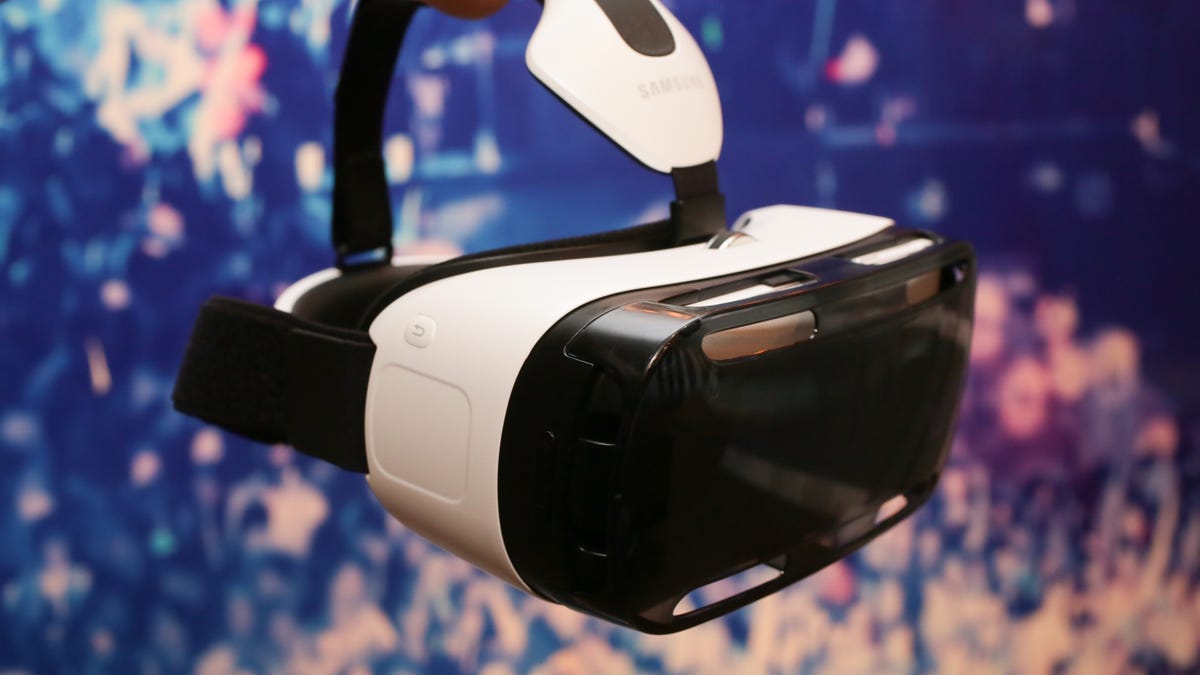
Sarah Tew/CNET
2014 was a giant year for wearables; in particular, wrist tech. Android Wear. Samsung devices galore. A ton of other fitness bands, smartwatches and even smart jewelry announced on an almost weekly basis. And the Apple Watch announcement.
Unlike the Google/Apple duopoly in the cellphone space, the wearable battlefield is wide open (check out our wearable buyers’ guide to see some of the current options). Players ranging from behemoths like Samsung and Microsoft to feisty startups like Pebble and Misfit, and all the Fitbits and Jawbones in between, are struggling to get a slice of the market before the 800-pound gorilla, the Apple Watch , lands sometime in early 2015.
That hot mess of a wearables landscape will be the background as the International CES, the world’s biggest electronics trade show, kicks off the first week in January. Here’s what to expect.
Punting from CES to MWC
Yes, CES is the first big coming-out party for the year’s latest and greatest electronics products. But there is another big trade show less than eight weeks later: Mobile World Congress. Many companies have already shifted their smartphone and tablet announcements to that show (which CNET will also be covering in-depth during the first week in March), and a decent chunk of the wearable tech — which is most decidedly “mobile” — is likely to make the shift as well.


Sarah Tew/CNET
Smaller companies take the spotlight
The three biggest players in wearable tech — Samsung, Google and Apple — probably won’t be a big factor at this year’s CES, except for the shadow they’ll cast over the show. Indeed, Apple and Google (along with Microsoft) don’t even attend the show in an official capacity, and Samsung will likely keep the focus on bigger ticket items like TVs. Instead, expect smaller companies to highlight their wares — like Pebble, which introduced its new Steel model at the 2014 show. This year, there’s even a whole new section of the show called “Tech West” that’s expected to be a better venue for these smaller vendors, away from the bustle of the main show floor in the Las Vegas Convention Center.
Connected devices, app partnerships
Now that there are smart watches, what do they work with? Partnerships with app ecosystems, new wearable apps, and appliances that work with wearables could be one of the bigger trends of the show. With Android Wear on the rise and the Apple Watch in full app-development mode, it’s already possible for app-makers to create for both platforms. Expect a lot of companies to dangle the phrase “smartwatch-compatible,” or something like it. Considering the sheer volume of products that just launched at the end of 2014, the biggest news coming from this show might involve new features coming to various current products via firmware updates: software improvements over hardware debuts. Expect smart-home developments to dovetail with wearable apps, too.
Wearables for other parts of your body
Now that the wrist is a battleground, what area of the body comes next? Hats, shoes, fitness pants? There’s no theoretical end to the types of Bluetooth-connected wearables that inventors might dream up next. Expect a weird range of outliers to appear at CES. We already have a handful of smart shirts, and for fitness, it’s not such a weird idea. Expect lots of “clip/attach” type devices — maybe even ones that work in tandem with smartwatches.


Sarah Tew/CNET
The battle for heart rate continues
Fitbit and Jawbone already have forthcoming heart-rate-measuring fitness bands. Microsoft Band and Intel’s Basis Peak do it, too. Heart rate is still a messy, unpolished landscape; expect companies to duke it out explaining why one heart-rate system is better than another, or promising better coaching and training systems. Make no mistake: the next wave of fitness tech will bank heavily on heart rate, and it’s all arriving now.


Sarah Tew/CNET
Glasses and VR: Expect more experiments
Expect “the big three” virtual-reality (VR) vendors to be showing their previously announced products: Oculus Rift (now a Facebook company), Sony’s Project Morpheus , and Samsung’s Oculus-powered Gear VR (a just-released $200 accessory that turns a Galaxy Note 4 into VR goggles). Meanwhile, no Google at the show means no Google Glass successor, either.
But even with interest in Glass — the face-wearable poster child — cooling, that doesn’t mean that lots of companies won’t be peddling smart glasses in one form or another. Custom-built business-oriented headsets, glasses with simple glowing smart notifications, and the next wave of augmented-reality projected-display glasses should be lurking around the show floor. Last year, there were a few; expect the trend to continue, and extend into input accessories like gloves, rings and haptics.
In this year’s Next Big Thing SuperSession, CNET editors will be speaking with virtual and augmented reality superstars like Palmer Luckey and Jeri Ellsworth to get their perspective on what the future holds for our new realities.
But, no matter what we see, expect it all to amount to a cautious first wave. Some companies may choose to make a splash, but with so much on the horizon just a month or two later, this show will inevitably just feel like the opening act.



